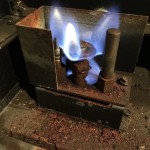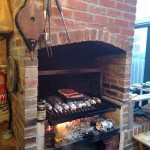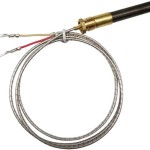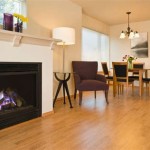Quiet Fireplace Insert Fans: Maximizing Heat Distribution Without the Noise
Fireplace inserts provide an efficient and aesthetically pleasing way to heat homes. However, the natural convection process can result in uneven heat distribution, with areas near the fireplace becoming excessively warm while other parts of the room remain cool. To combat this, fireplace insert fans are often employed to circulate the heated air more effectively. The primary concern for many homeowners is finding a fan that performs its function without introducing unwanted noise into the living space.
The goal of a fireplace insert fan is to distribute the heat generated by the insert more evenly throughout the room, creating a more comfortable and consistent temperature. Without a fan, the warm air tends to rise and concentrate near the ceiling, leaving the lower portions of the room feeling cooler. A fan helps to break up this stratification and push the warm air outward, reaching the furthest corners of the room. In order to achieve this while remaining unobtrusive, careful consideration must be given to the fan's design, motor, and overall construction.
A quiet fireplace insert fan is a crucial element in enjoying the benefits of a fireplace insert without the disruption of a noisy appliance. A perpetually loud fan can negate the relaxing atmosphere that a fireplace is intended to create. Thus, selecting a fan designed for quiet operation is essential for maintaining a comfortable and peaceful environment.
Understanding the Sources of Fan Noise
Several factors contribute to the noise produced by a fireplace insert fan. Identifying these sources allows for a better understanding of how to select a quieter model. The primary sources of noise are the motor, the fan blades, and the housing or mounting of the fan. Each element contributes differently to the overall noise level.
The motor is often the most significant contributor to fan noise. Cheaper motors can produce a humming or buzzing sound, which can be amplified by the fan's housing. The quality of the motor's bearings and the precision of its construction directly impact the amount of noise generated. Motors with sealed bearings tend to be quieter than those with open bearings. Additionally, the speed at which the motor operates also affects the noise level – higher speeds naturally result in increased noise.
The design and balance of the fan blades also play a role in the noise. Blades that are imbalanced or poorly shaped can create turbulence and vibrations, leading to increased noise. The material and construction of the blades also influence the sound. Blades made from lighter materials, such as aluminum, are often quieter than those made from heavier materials, such as steel. The angle and curvature of the blades can also affect airflow and noise generation.
Finally, the fan's housing and mounting can amplify vibrations and contribute to the overall noise level. If the fan is not securely mounted or if the housing is made from thin or resonant materials, vibrations can be transmitted and amplified, creating an annoying buzz or rattle. Properly designed housings with vibration-dampening materials can help to minimize this effect.
Key Features of Quiet Fireplace Insert Fans
When searching for a quiet fireplace insert fan, several key features should be considered. These features are designed to minimize noise while maximizing airflow and efficiency. Paying attention to these characteristics can help ensure a more peaceful and comfortable heating experience.
One of the most important features is the motor type. Look for fans with high-quality, sealed-bearing motors designed for quiet operation. Brushless DC motors are often quieter and more efficient than traditional AC motors. These motors tend to run smoother and produce less mechanical noise. Furthermore, variable-speed controls are beneficial, as they allow the user to adjust the fan speed to the specific needs of the room, minimizing noise during periods when less airflow is required. A potentiometer or remote control can offer precise speed adjustment, allowing for a more granular control over both heat distribution and noise levels.
The fan blade design is another key consideration. Look for fans with blades that are balanced and aerodynamically optimized to reduce turbulence and noise. Curved blades or blades with specific angles can improve airflow while minimizing noise. Materials like lightweight aluminum or polymers are often preferred for their noise-dampening properties. The number of blades can also influence the noise level – fans with a larger number of smaller blades may be quieter than those with fewer, larger blades.
The housing and mounting of the fan should also be carefully considered. Look for fans with robust, well-dampened housings made from materials that resist vibration. Rubber or silicone mounts can help to isolate the fan from the fireplace insert, preventing vibrations from being transmitted to the surrounding structure. Proper installation is also crucial – ensuring that the fan is securely mounted and that all screws are tightened can help to minimize rattling and buzzing noises.
Installation and Maintenance for Quiet Operation
Even the quietest fireplace insert fan can become noisy if it is not properly installed or maintained. Proper installation and regular maintenance are essential for ensuring long-term quiet operation.
During installation, it is important to follow the manufacturer's instructions carefully. Ensure that the fan is securely mounted and that all connections are properly tightened. Use vibration-dampening materials, such as rubber washers or silicone pads, to isolate the fan from the fireplace insert and surrounding structure. Check for any potential points of contact or vibration and address them before operating the fan. Routing the power cord away from any vibrating surfaces also helps to reduce unwanted noise.
Regular maintenance is also crucial for maintaining quiet operation. At least annually, clean the fan blades and surrounding area to remove dust and debris, which can accumulate and cause imbalances or obstructions. Inspect the fan motor for signs of wear or damage and lubricate the bearings as needed. Check the mounting hardware to ensure that all screws and bolts are tight. If the fan begins to make unusual noises, investigate the source of the noise and address the issue promptly.
By understanding the sources of fan noise, selecting a fan with key features designed for quiet operation, and ensuring proper installation and maintenance, homeowners can enjoy the benefits of improved heat distribution without the disruption of a noisy appliance. This allows for a more comfortable and peaceful home environment during the colder months.

Small Fireplace Powered Low Energy Consumption Environment Friendly 25db Top Fan Quiet For Indoor Accessory Com

Small Fireplace Powered Low Energy Consumption Environment Friendly 25db Top Fan Quiet For Indoor Accessory Com

Dual Head Fireplace Fan 10 Blade Heat Powered Stove Log Wood Burner Eco Quiet Double Non Electric For Thermoelectric Gift Fall

Vevor Wood Stove Fan Heat Powered Quiet Fireplace Fans For Log Burner Heater 260 Cfm Maximum Airflow Non Electric Dtblfsw235d1ghy31v0 The Home Depot

Fireplace Blowers Explained How Fans Work Regency

Stove Fan Heat Powered For Wood Burning Stoves Or Fireplaces Quiet And Low Maintenance Diss Warm Air Through House By Home Complete Target

Noisy Gas Fireplace Blower Here S How To Replace It Diy

Wood Burning Furnace Fan

6 Aluminum Alloy Heat Powered Burning Silent Fireplace Hanging Fan Friendly Log Burner Efficiently Efficient Com

Why Do I Need A Blower Fan On My Fireplace We Love Fire








